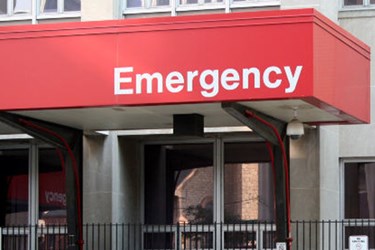MACPAC Report Addresses Medicaid ER Myths

By Christine Kern, contributing writer

According to a Medicaid and CHIP Payment and Access Commission report, non-urgent visits account for only 10 percent of all Medicaid-covered ER Visits.
This week, the Medicaid and CHIP Payment and Access Commission (MACPAC) released its official pushback document. The report hopes to challenge some of the myths surrounding how and why low-income Medicaid beneficiaries seek care in emergency departments.
“Because of the kind of conversations going on, we decided to look at what the experts have to say on this,” said Anne Schwartz, executive director of MACPAC.
The report examines ER usage by Medicaid beneficiaries to determine whether they are using the ER more frequently or intentionally using ERs for non-urgent care needs. It also examines whether or not enrollees are having difficulty finding primary-care doctors. Based on literature reviews of dozens of studies and research papers, its key findings include:
- Most ER use among Medicaid enrollees is necessary.
- Most Medicaid beneficiaries have a primary-care doctor or a usual place for care, so aren't using the ER as an alternative provider.
- There's no evidence to suggest expanding Medicaid will result in increased ER use. Some states that have expanded the program saw no increase in ER utilization, while in others the uptick was short-lived.
“If people believe these myths, it may lead to a policy that limits access to emergency care,” said Dr. Robert O'Connor, vice president of the American College of Emergency Physicians. “Already, you hear about states attempting to cap the amount of ER visits that they'll reimburse for at some arbitrary number.”
The central myth debunked by the report is one claiming most ER use by Medicaid patients is unnecessary. The report shows that, in fact, the majority of ER visits by Medicaid patients are for urgent symptoms and serious medical problems that require prompt medical attention.
Non-urgent visits actually account for just 10 percent of all Medicaid-covered ER visits for non-elderly patients, according to the briefing paper.
The myth has been perpetuated by studies of ER use that cite large percentages of ER visits paid for by Medicaid and managed-care insurance companies as being deemed either avoidable or preventable. MACPAC cautions that these studies not represent the experience of care in real time.
Although the report did conclude that many Medicaid recipients do struggle to find doctors, it also found that but those issues are universal among regularly insured people with similar social circumstances, and are not unique to those on Medicaid. These issues include difficulty reaching a doctor's practice by phone or a physician after hours; difficulty getting an appointment; language barriers; and difficulty obtaining transportation.
Pointing to a series of studies done in states that have had limited Medicaid expansion prior to the ACA, the report also claimed that there is insufficient evidence that Medicaid expansion would lead to increased ER use across the country this year. MACPAC found inconclusive evidence to suggest Medicaid expansion states would experience an across-the-board increase in ER use, the report concluded.
Of course, the report is probably not enough to silence the opposition to Medicaid expansion or the perpetuation of some of the myths addressed in the report.
“It is common sense to believe if the government adds 14 to 20 million more people to the Medicaid program, through the Affordable Care Act, usage of all types of healthcare will increase for this population, including the ER,” said Dr. Roger Stark, healthcare analyst at the Washington Policy Center.
